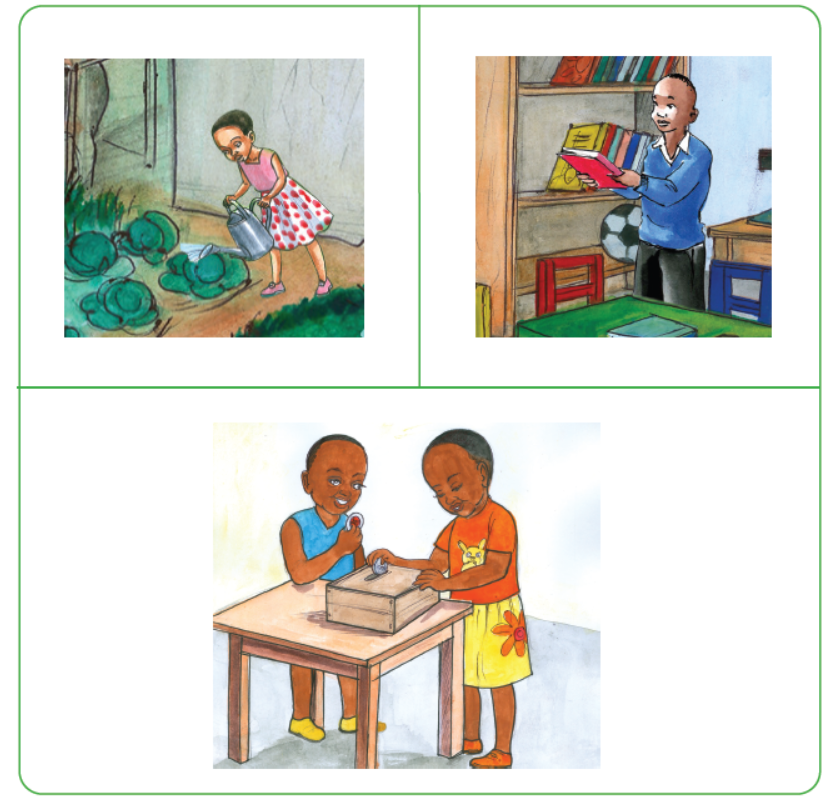Topic outline
Inyigisho1: Ishuri ryange
1. Inyubako zigize ishuri
Ibyumba by’ amashuri, ibiro by’ubuyobozi n’ubwiherero.

 Ndashushanya ishuri ryange.
Ndashushanya ishuri ryange.
2. Abantu dusanga ku ishuri
Abayobozi, abarezi, abanyeshuri n’abandi bakozi

3. Ingero z’ibikoresho dusanga mu ishuri
Intebe, ameza, ibitabo, amakaramu n’ibindi binyuranye.


Ndasiga amabara ku ibikoresho byo mu ishuri gusa.
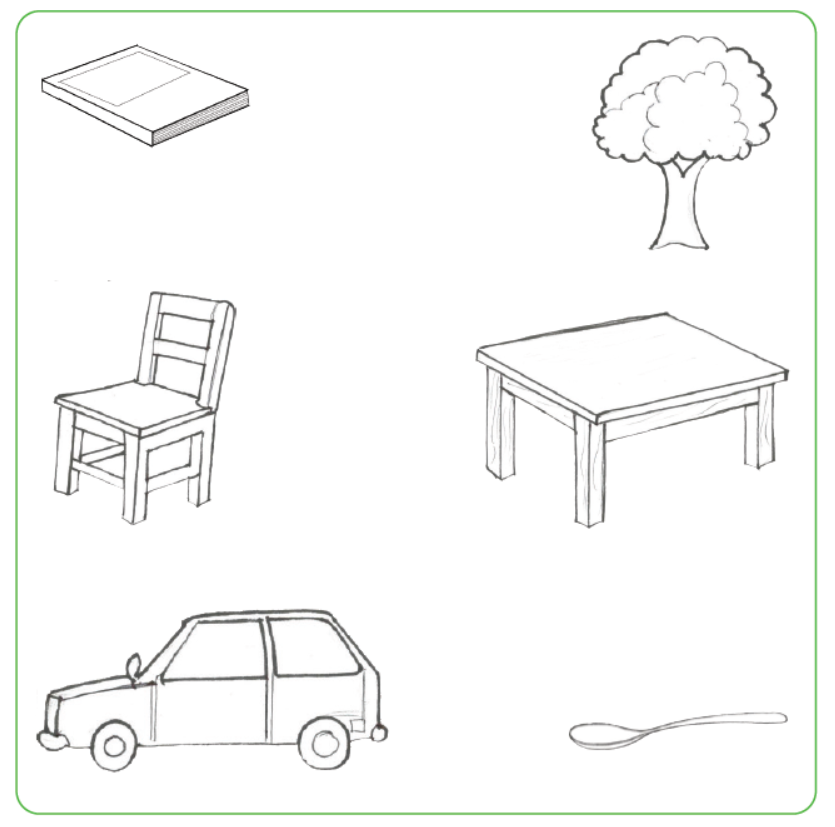

Ndashushanya ibikoresho byo mu ishuri. Ndashushanya ibikoresho byo mu ishuri.

Inyigisho2 Umudugudu wange
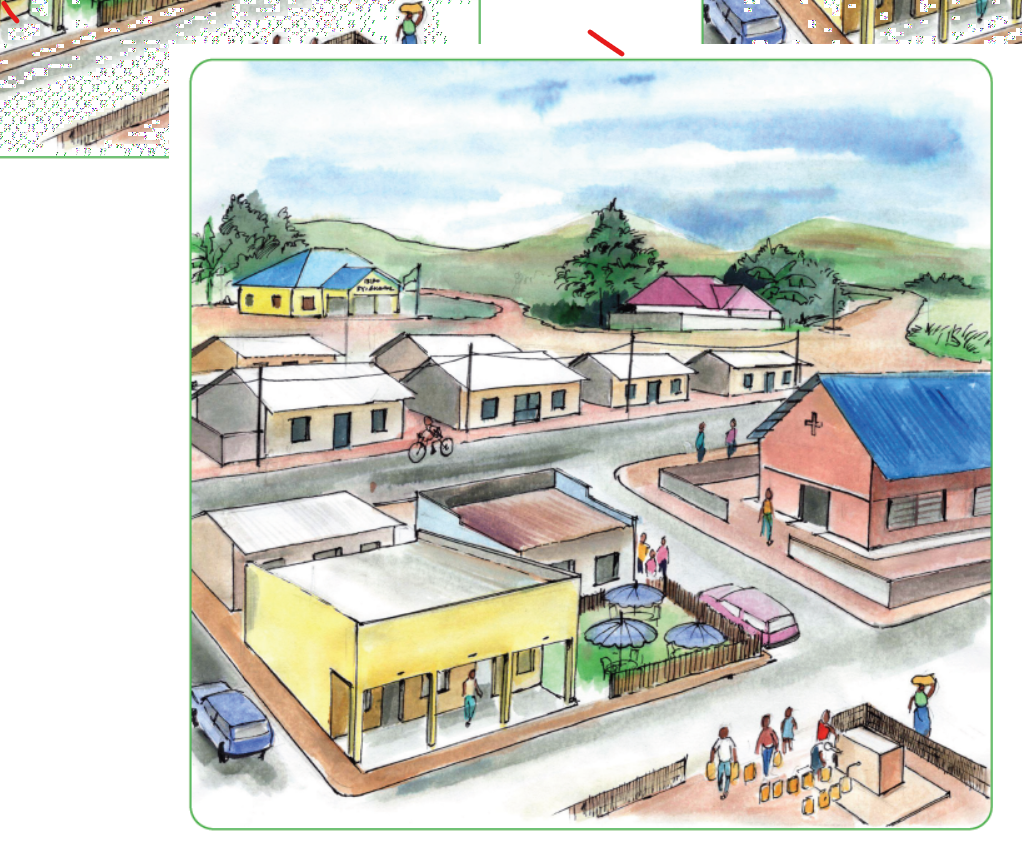
1. Ibyo dusanga mu mudugudu
Iduka

Isoko

Ivuriro
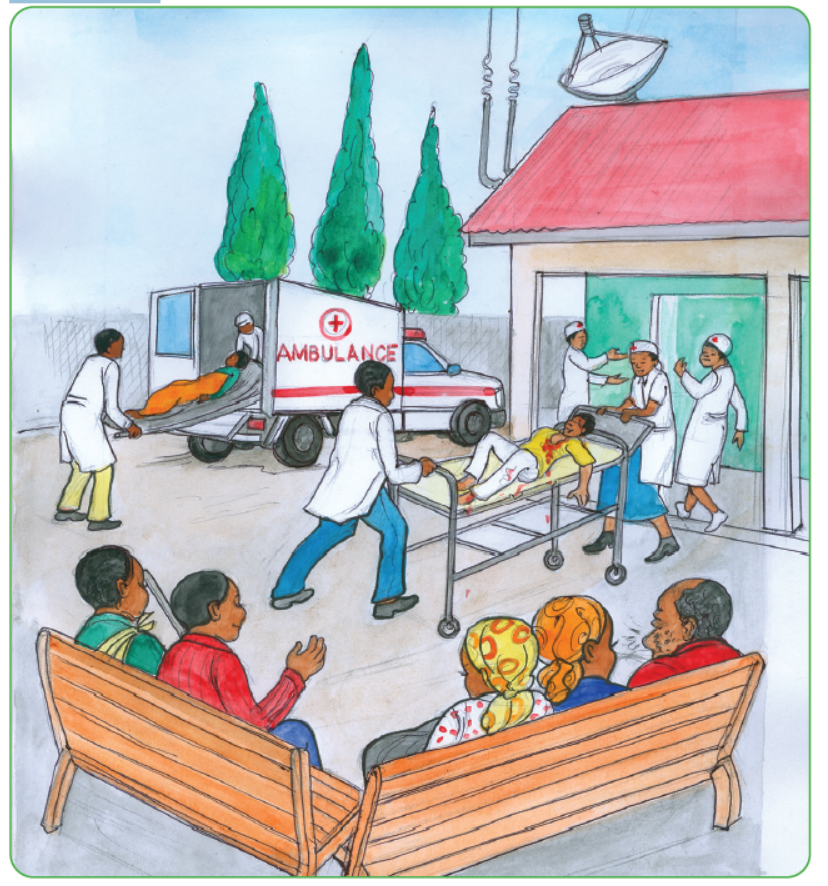
Aho bagurira imiti
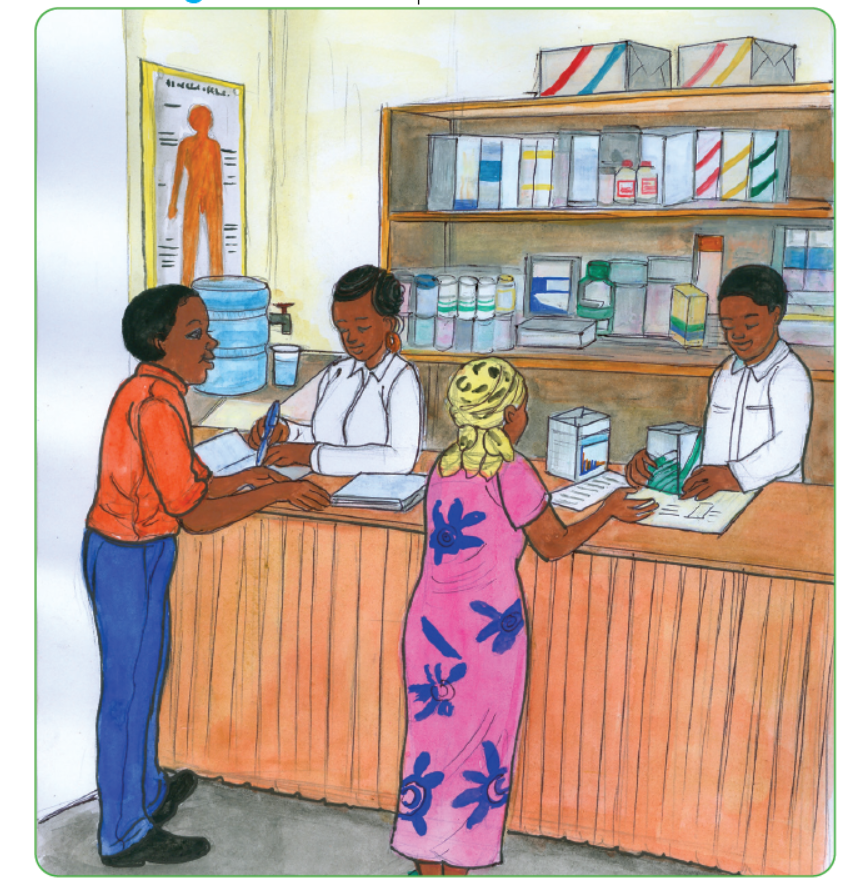
Insengero
Mu kiriziya tuhasanga bibiriya, umusaraba n’amashusho.
Mu kiriziya abantu baritonda bagatega amatwi.

Abaporoso basenga ku cyumweru bayobowe na Pasitori.
Mu rusengero dusangamo bibiriya n’ibikoresho bya muzika.
Mu rusengero abantu baritonda bagatega amatwi.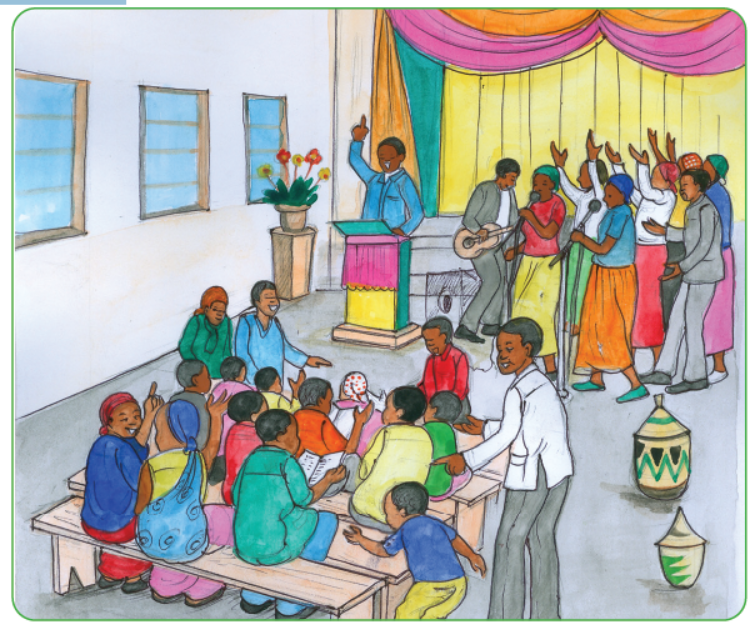
Abadivantisiti b’umunsi wa 7 basenga ku isabato bayobowe na Pasitori.
Mu rusengero dusangamo bibiriya.
Mu rusengero abantu baritonda bagatega amatwi.
Abayisiramu basenga kuwa gatanu bayobowe na Shehe.
Mu musigiti dusangamo ikorowani n’imikeka.
Mu musigiti abantu baritonda bagasari.
 Ndahuza abakuru b’insengero n’insengero zabo.
Ndahuza abakuru b’insengero n’insengero zabo.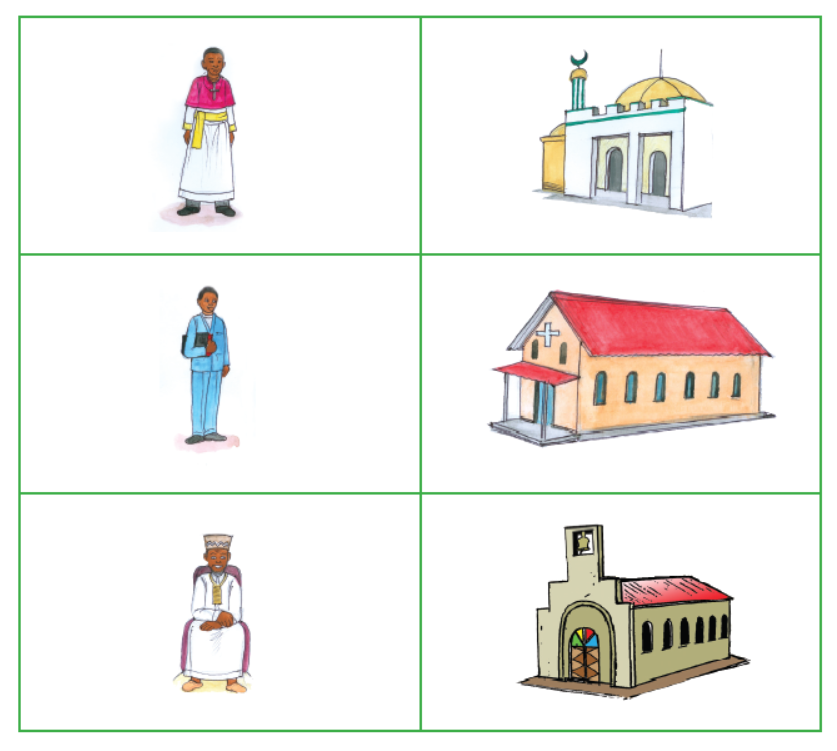
Banki

2:Imirimo ikorerwa aho dutuye
Ubuhinzi
Umuhinzi umwe aruhira amashu, undi aratera dodo.

Ubworozi
Umworozi arakata ubwatsi bw’inka.
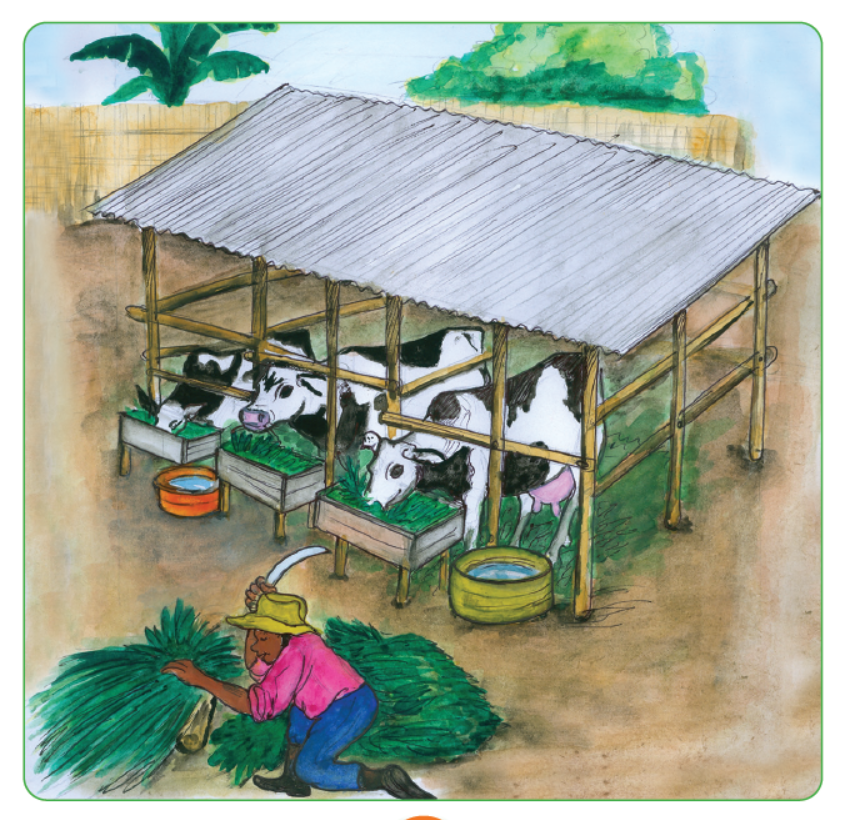
Ubwubatsi
Abubatsi barubaka inzu.
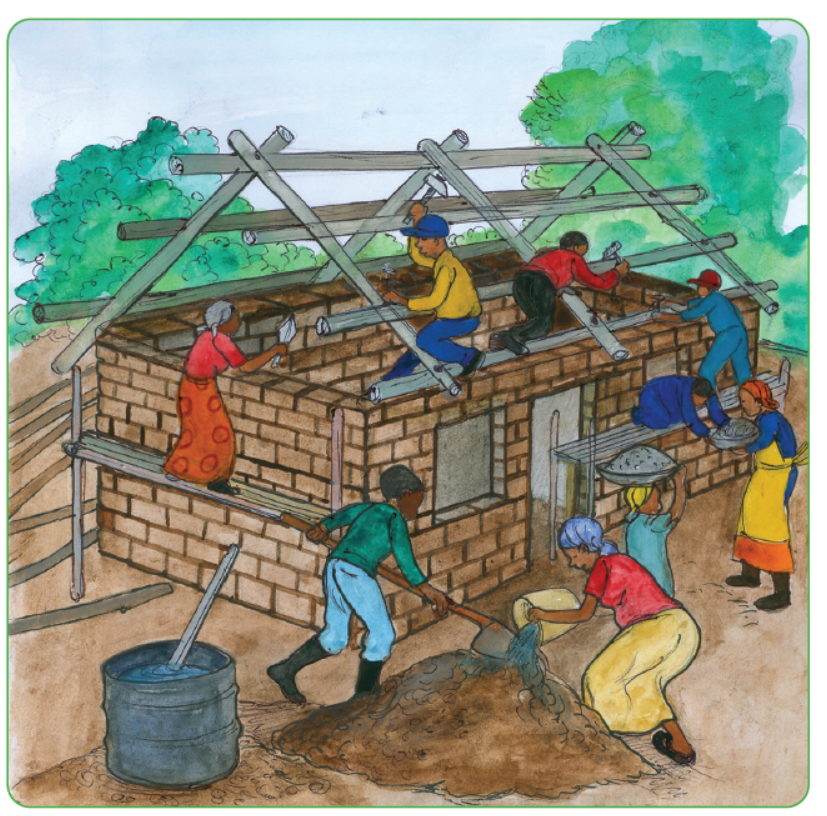
Ububaji
Ababaji barabaza ibikoresho byo mu nzu.

Ubudozi
Abadozi baradoda imyenda.
Umuboshyi
Ababoshyi barimo kuboha ibiseke.
Kogosha no gutunganya imisatsi.
Abogoshi barogosha imisatsi.
Abasutsi barasuka imisatsi.
 Ndavuga icyo abantu bari kuri aya mashusho bakora.
Ndavuga icyo abantu bari kuri aya mashusho bakora.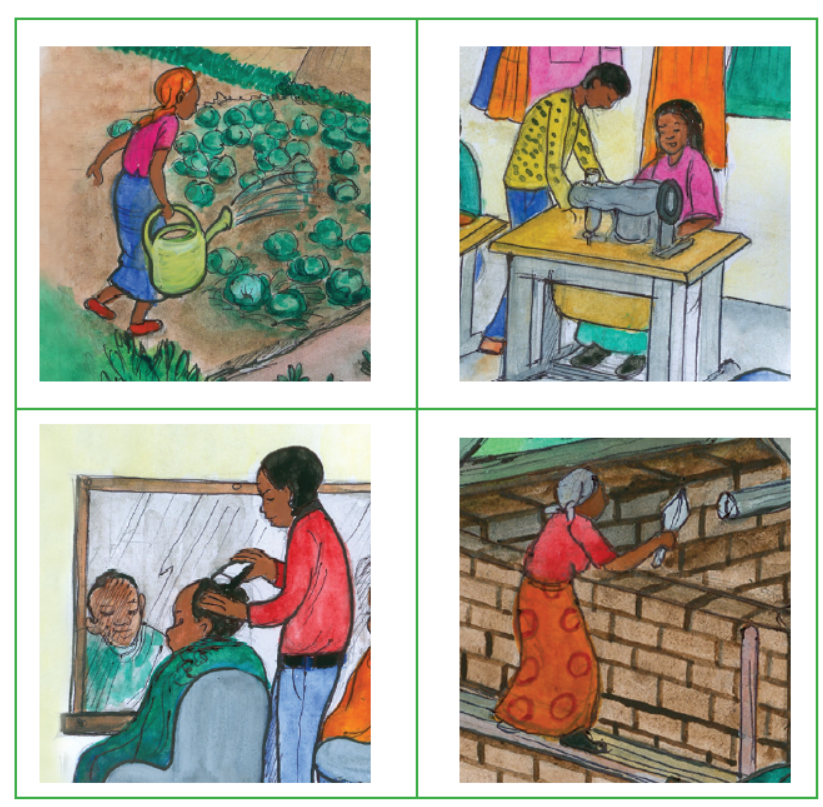
Inyigisho3 :Igihugu cyange

Ibendera ry’igihugu
Igihugu cyange kitwa u Rwanda.
Ibendera ry’u Rwanda rigizwe n’amabara 3:
ubururu, umuhondo, icyatsi kibisi n’izuba.
 Ndazengurutsa uruziga ku ibendera ry’ u Rwanda.
Ndazengurutsa uruziga ku ibendera ry’ u Rwanda.
Kuririmba indirimbo y’igihugu:
“RWANDA NZIZA”
Bayiririmba bahagaze bemye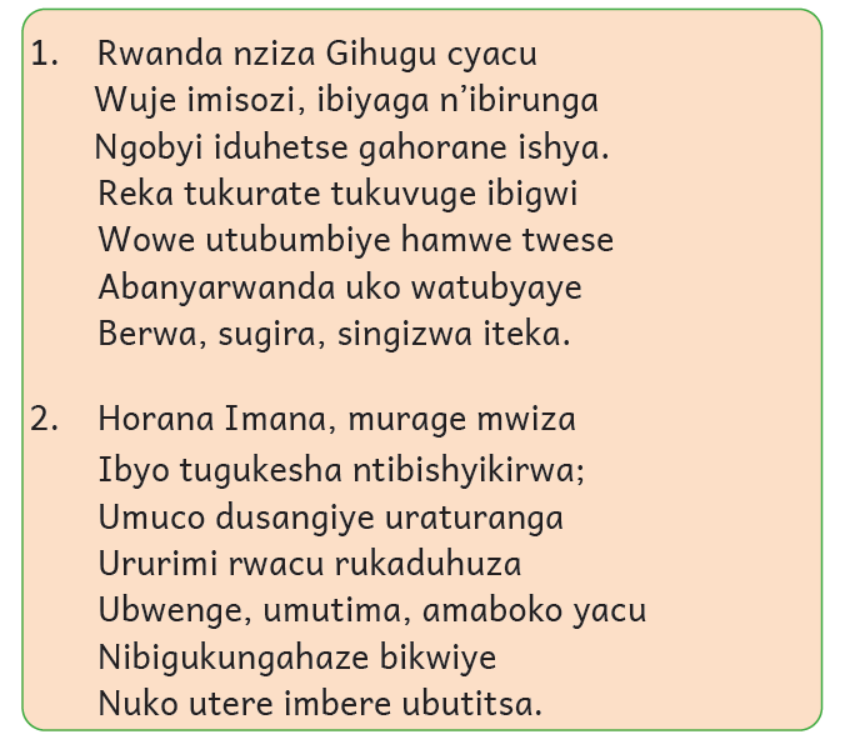
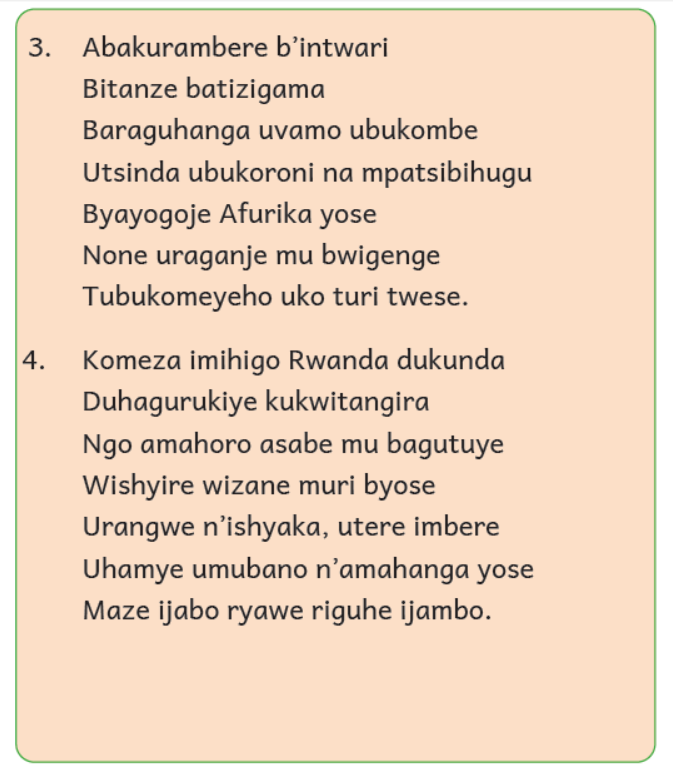
Inyigisho 4: Icungamutungo rirandeba
1. Ibigize umutungo mu rugo
Amazu, amatungo, imirima n’ibindi.
Mfatanya n’ababyeyi bange kongera umutungo wacu.
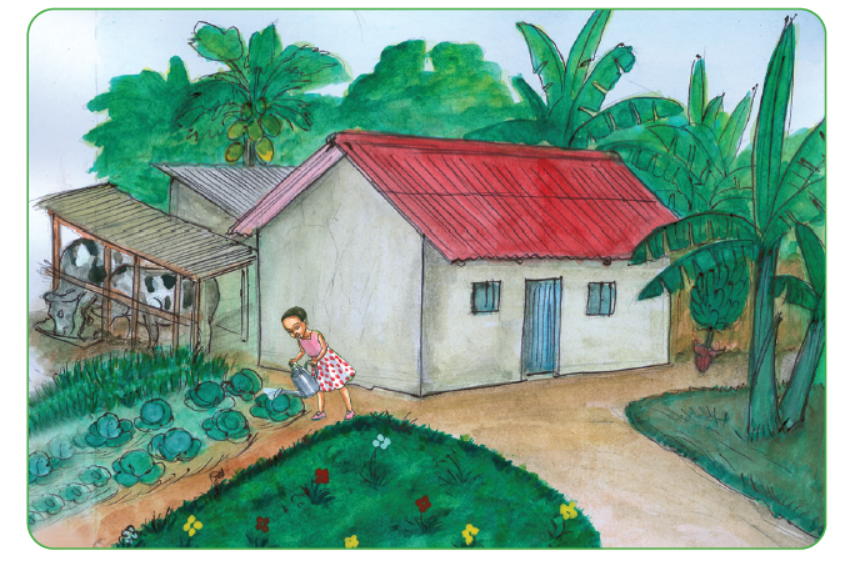
Ibikoresho
Ni byiza kubika neza ibikoresho.

Amafaranga
Nizigamira amafaranga, nkayagura ibikenewe.
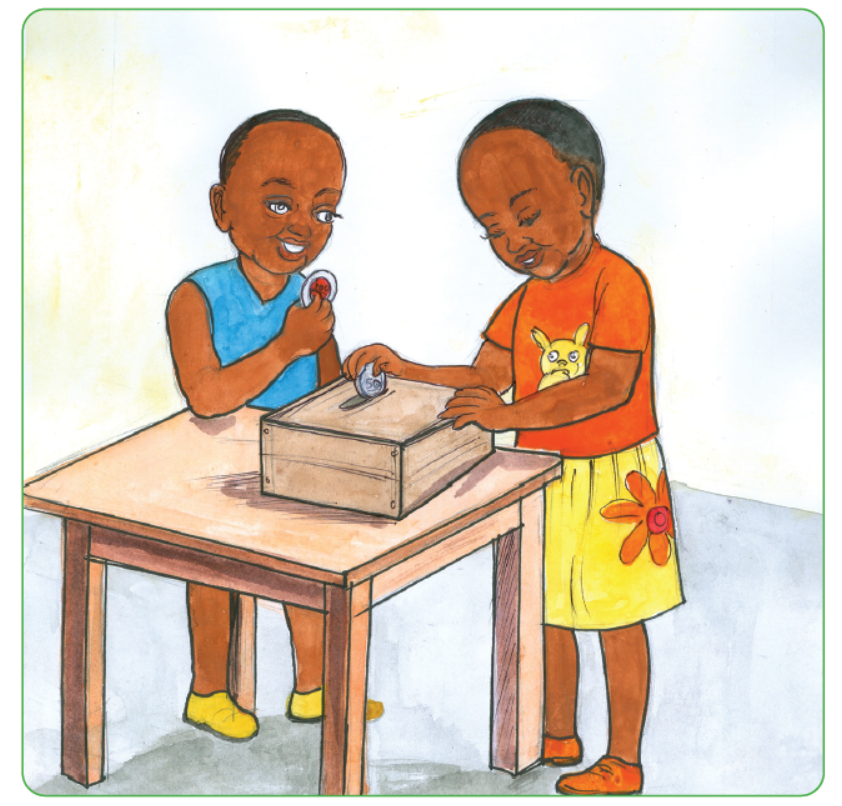
2. Gufata neza ibigize umutungo wo ku ishuri
Mfata neza ibikoresho nsanga
ku ishuri nirinda kubyangiza.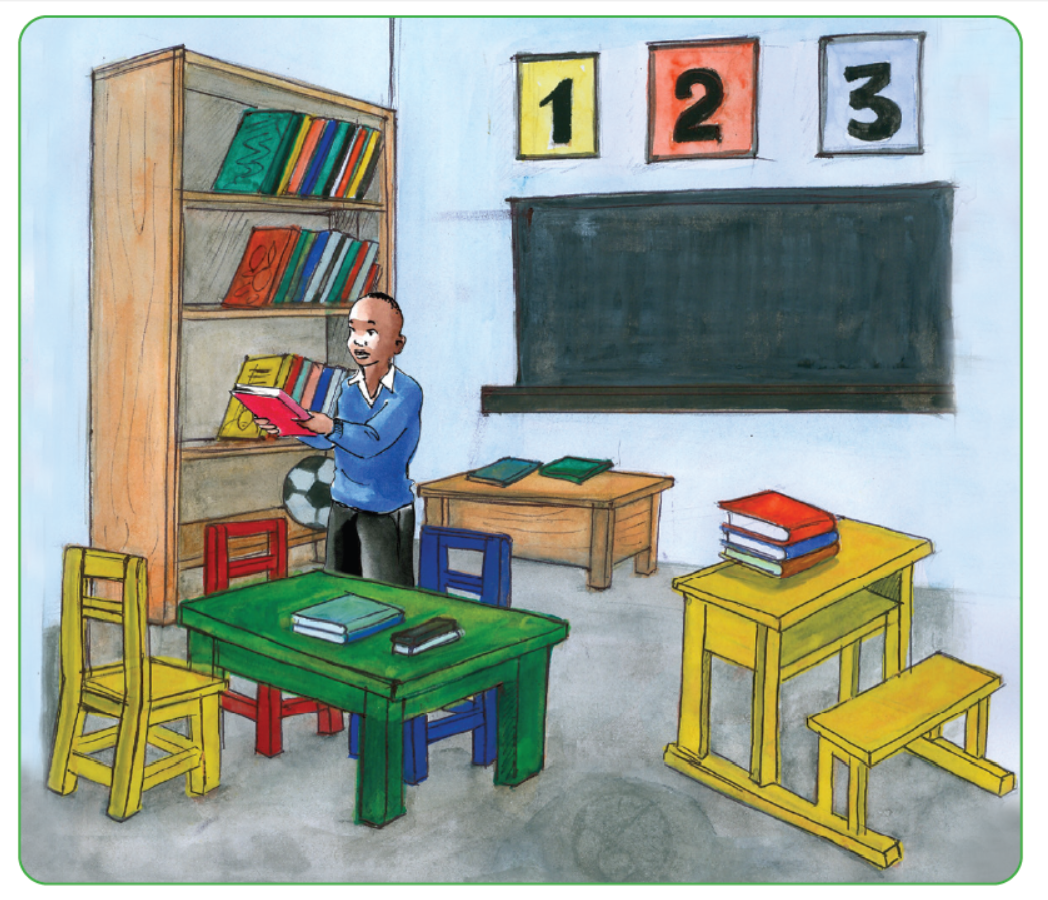
 Ndavuga uruhare rwange mu icungamutungo.
Ndavuga uruhare rwange mu icungamutungo.